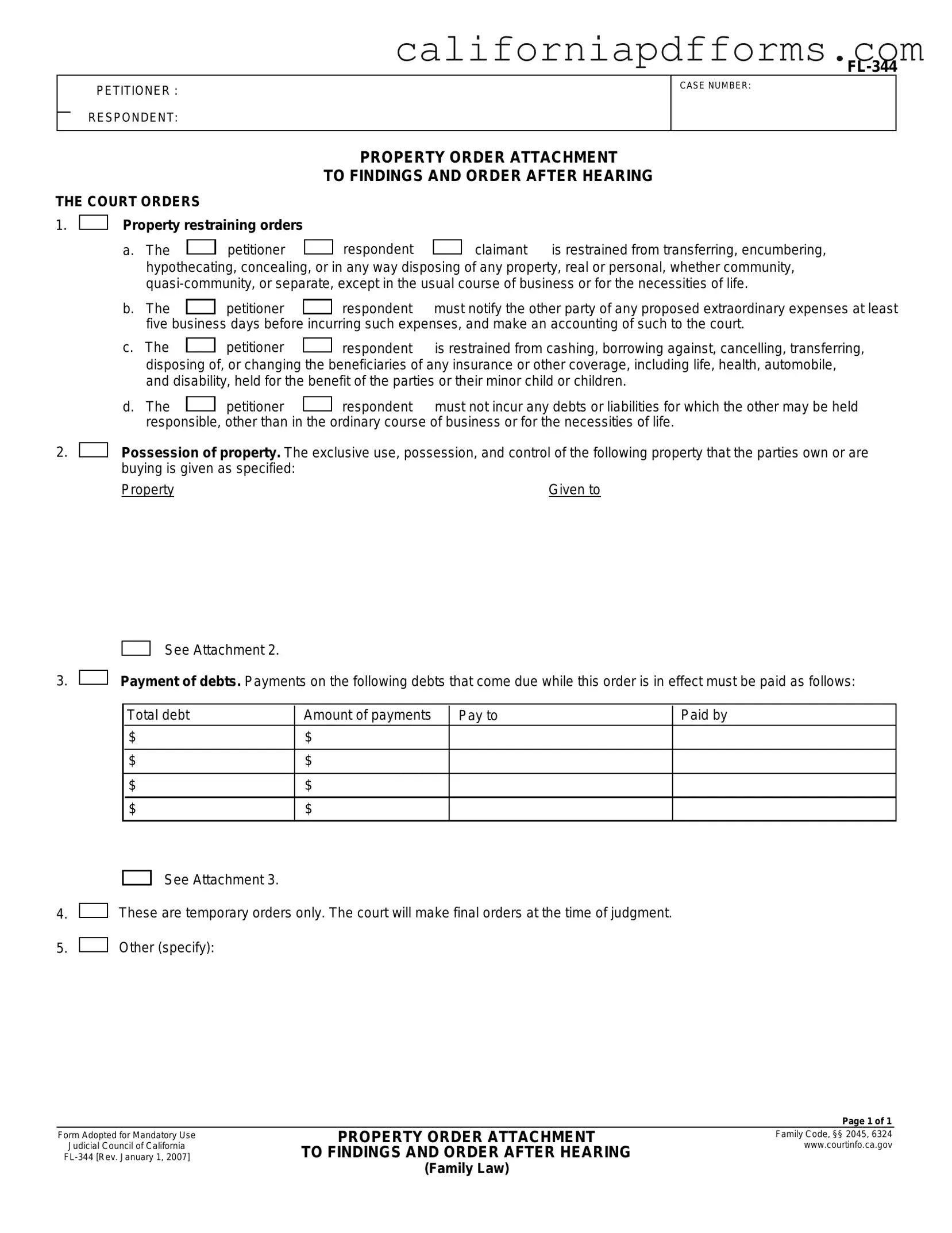Download California Fl 344 Form
The California FL 344 form serves as a crucial legal document in family law cases, particularly when addressing property issues during divorce or separation proceedings. It outlines the court's temporary orders regarding the management and control of property, ensuring that neither party can dispose of assets without consent. Understanding this form is essential for anyone navigating the complexities of family law in California; take action by filling out the form below.
Open Your Form Online
